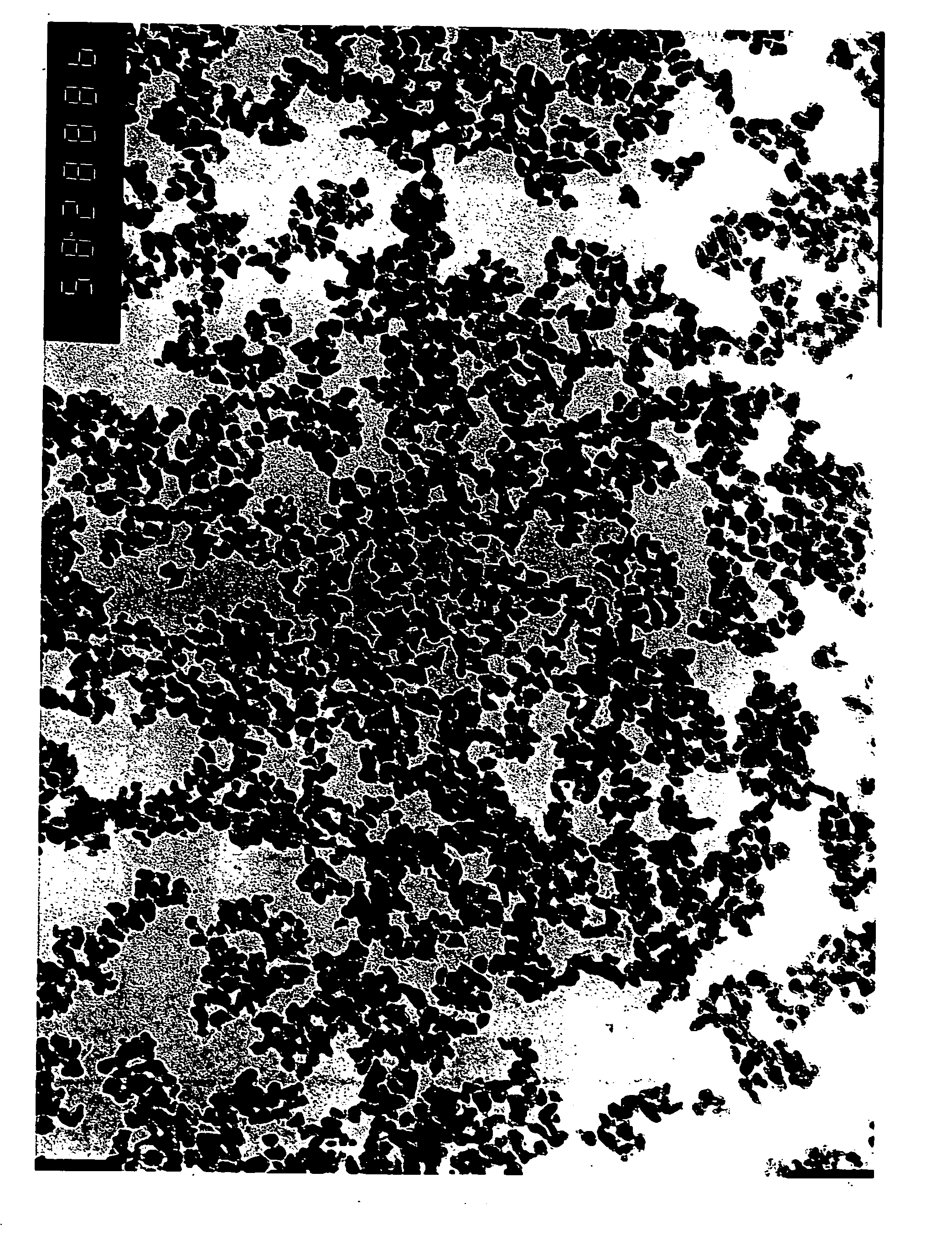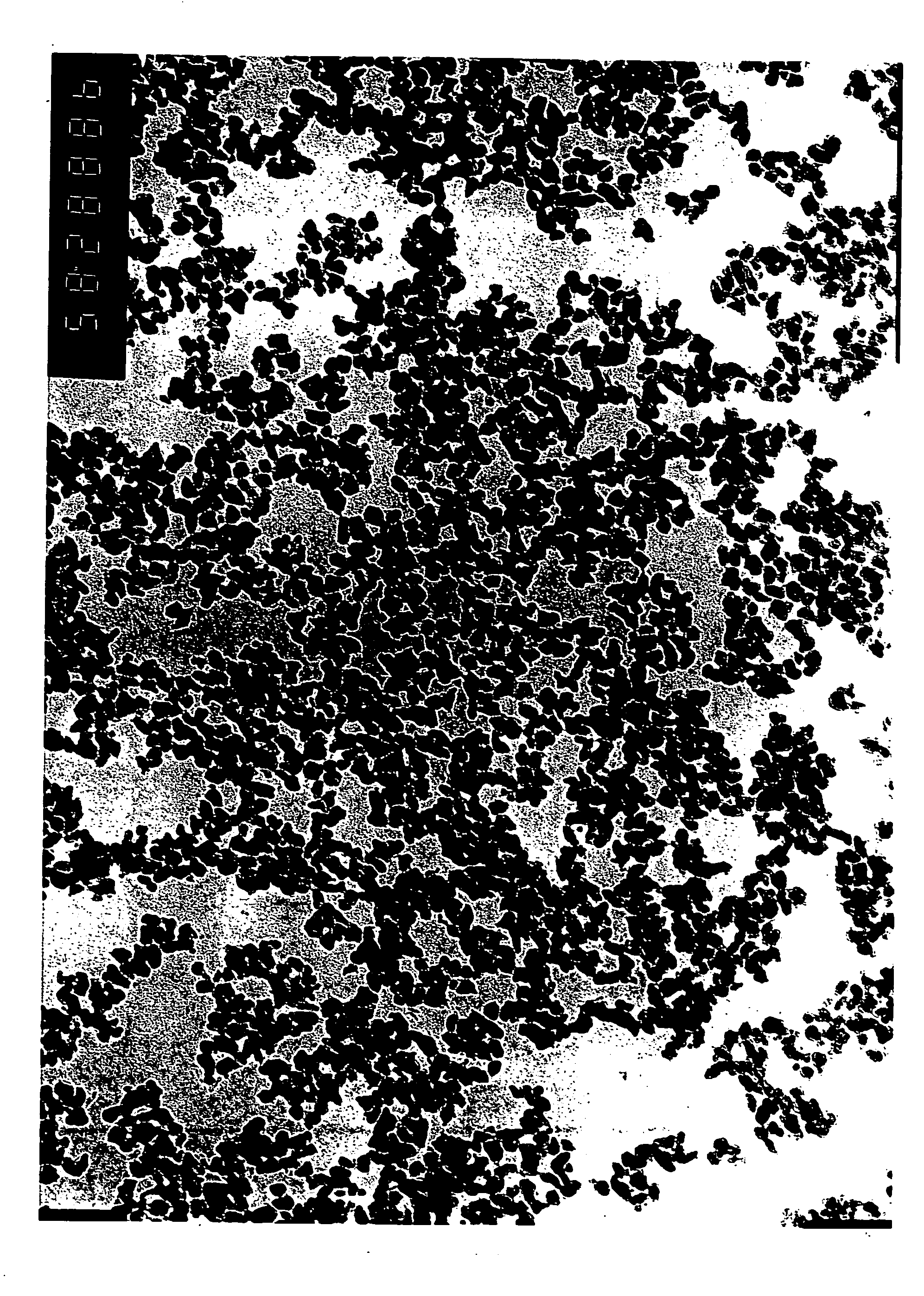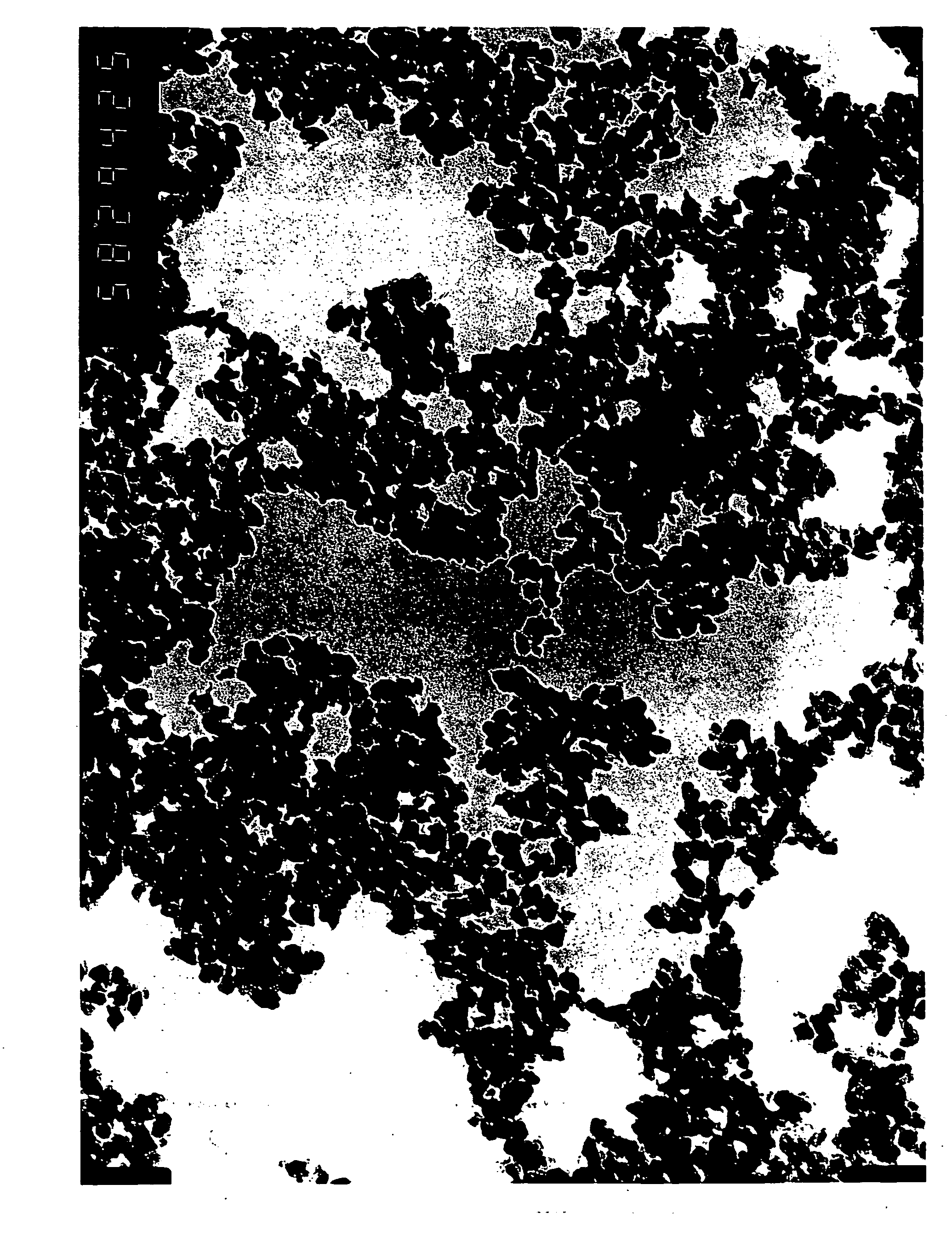Iron nitride magnetic powder and method of producing the powder
- Summary
- Abstract
- Description
- Claims
- Application Information
AI Technical Summary
Benefits of technology
Problems solved by technology
Method used
Image
Examples
example 1
[0043] To 4 L (four liters) of a 0.2 mol / L aqueous solution of FeSO4 were added 0.5 L of a 12 mol / L aqueous solution of NaOH and an amount of sodium aluminate to make Al / Fe=10 at. %. The liquid mixture was maintained at a temperature of 40° C. while air was blown into it at a flow rate of 300 mL / min for a period of 2.5 hours, thereby precipitating goethite containing Al in solid solution. Upon completion of this oxidation treatment, the precipitate was filtered off, washed with water and then dispersed in water.
[0044] The dispersion was added with an amount of yttrium nitrate to make Y / Fe=2.0 at. % and then, at 40° C., with an amount of sodium aluminate to make Al / Fe=1.6 at. %, and with NaOH to adjust the pH to 7-8, thereby adhering yttrium and aluminum to the particle surfaces. The result was separated from the liquid by filtering, washed with water and dried in air at 110° C.
[0045] The so-obtained starting powder consisted of goethite having an average particle diameter of 30 nm...
example 2
[0049] Example 1 was repeated except that when the precipitated goethite containing Al in solid solution obtained by the oxidation treatment was further subjected to the treatment for adhering sinter preventing agent, a zirconium sulfate was used instead of sodium aluminate so as to make Zr / Fe=3 at. %. The powder properties of the obtained magnetic powder and properties of the tape were evaluated in the manner of Example 1. The results are shown in Table 1.
example 3
[0054] The magnetic powder obtained in Example 1 was used to fabricate a magnetic test tape having a double-layer structure composed of a magnetic layer and a nonmagnetic layer. The tape was subjected to magnetic conversion measurement.
[0055] In preparing the magnetic coating material, 100 parts by weight of the magnetic powder were blended with the materials set out below in the indicated number of parts by weight. In preparing the nonmagnetic powder, 85 parts by weight of the nonmagnetic powder were blended with the materials set out below in the indicated number of parts by weight. Both blends were kneaded and dispersed using a kneader and a sand grinder.
[0056] Magnetic Coating Material Composition
Magnetic powder100 parts by weightCarbon black 5 parts by weightAlumina 3 parts by weightVinyl chloride resin (MR110) 15 parts by weightPolyurethane resin (UR8200) 15 parts by weightStearic acid 1 part by weightAcetylacetone 1 part by weightMethyl ethyl ketone190 parts by weightCycl...
PUM
| Property | Measurement | Unit |
|---|---|---|
| Volume | aaaaa | aaaaa |
| Particle diameter | aaaaa | aaaaa |
| Volume | aaaaa | aaaaa |
Abstract
Description
Claims
Application Information
 Login to View More
Login to View More - Generate Ideas
- Intellectual Property
- Life Sciences
- Materials
- Tech Scout
- Unparalleled Data Quality
- Higher Quality Content
- 60% Fewer Hallucinations
Browse by: Latest US Patents, China's latest patents, Technical Efficacy Thesaurus, Application Domain, Technology Topic, Popular Technical Reports.
© 2025 PatSnap. All rights reserved.Legal|Privacy policy|Modern Slavery Act Transparency Statement|Sitemap|About US| Contact US: help@patsnap.com



